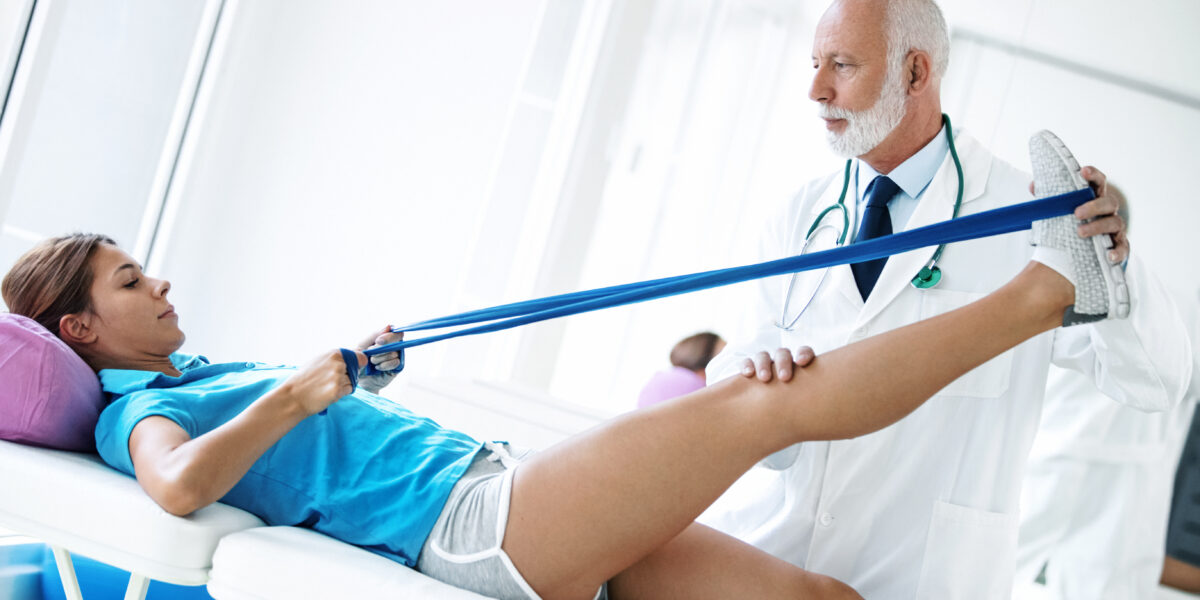You’ve probably seen doctors on TV working with professional sports teams, helping athletes stretch before a big game or treating injuries that arise on the field. But if you’re not a pro athlete, will you ever need to see a sports medicine provider?
The answer is: absolutely.
Sports medicine is another name for non-operative orthopedics; that is, sports medicine providers treat injuries and chronic pain—whether caused by playing sports or not—without surgery. Our counterpart in surgery, orthopedic surgeons, will treat you if your injuries require surgical intervention.
So, when might you—regardless of your age or athletic interest—need to see a sports medicine provider?
What Do Sports Medicine Providers Treat?
Here at ChristianaCare, our Sports & Lifestyle Medicine team sees patients of all ages, from pediatrics to senior care. Some common conditions that we treat include:
- Arthritis, including knee arthritis.
- Tendon issues, like tendonitis and tendon injuries.
- Osteoporosis, or loss of bone strength, usually due to age.
- For kids, we often treat growth plate fractures and related issues, as well as overuse injuries that impact growth and sports participation. Remember, children aren’t just tiny adults—their rapid growth can cause some growing pains.
- Injuries from sports or daily activities that don’t require surgery for treatment, like a muscle sprain or stress fracture.
ChristianaCare also offers the Safe Steps Program, a fall prevention program for patients 65 and older that helps seniors move safely and confidently. Sports medicine is a large part of this program, working with patients on gait, balance and other aspects of their daily movement to help prevent injuries from falls.
Basically, if you’re dealing with an issue that impacts your movement and doesn’t require surgery, you can see one of our sports medicine providers.
Top Tips to Keep You Moving
Stay Active. In sports medicine, we like to say that “motion is lotion for the joints.” That is, staying active will help keep your joints working fluidly and without pain for longer. The right mode of physical activity can vary depending on your age and overall health, but finding a movement practice you enjoy—whether that’s walking, yoga, strength training, or beyond—is a necessary first step.
Consistency is Key. Commit to regular movement practice once you figure out your favorite way to move. This may not look the same every day, week or month; however, the more regularly you make movement a part of your daily routine, the more likely you are to make it a habit and stick with it long–term.
Moderation is Best. Yes, regular movement is essential—but so is movement in moderation. Especially if you’re new to a movement practice, don’t push yourself to the point of pain or extreme discomfort when working out, as this is when injuries often happen. If you’re beginning a new fitness routine or sport, working with a professional, like an athletic trainer, could be a great way to make sure you’re moving safely and at a frequency that works for your body. Always discuss a new fitness plan with your primary care (or sports medicine!) provider before getting started.
Keep a Positive Mindset. It may sound counterintuitive, but regular movement doesn’t just benefit our bodies. In numerous ways, it also helps our minds, particularly our mental health. A movement practice rooted in group fitness, whether a sports team, neighborhood walking group, or yoga class, helps increase socialization and community connection, raising feelings of well-being. Regular physical activity also helps with sleep, focus and the alleviation of some depression and anxiety symptoms. Keeping a positive mindset around movement—and remembering that movement is good for our overall long-term health, not just our appearance or size—will help you stay motivated, too.
Seeing a Sports & Lifestyle Medicine Provider
If you want to see us, you can reach out to a practice directly and make an appointment. Depending on your insurance, you may need to seek out a referral from your primary care provider. If you’re not sure, check with your insurance provider for more details.
ChristianaCare Sports & Lifestyle Medicine providers are here to help you pursue your goals for athletics and physical activity, whether that’s training for a race or walking your grandchildren down the block. And remember – motion is lotion for your joints!



